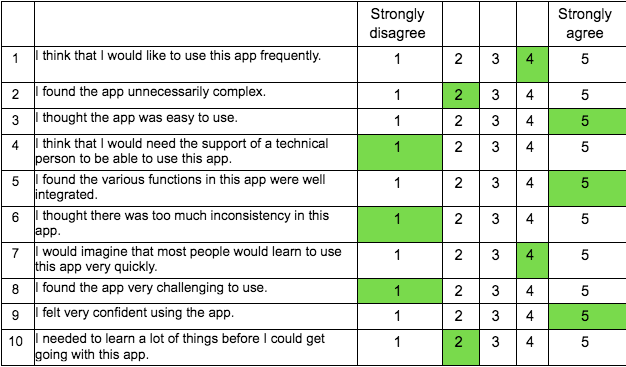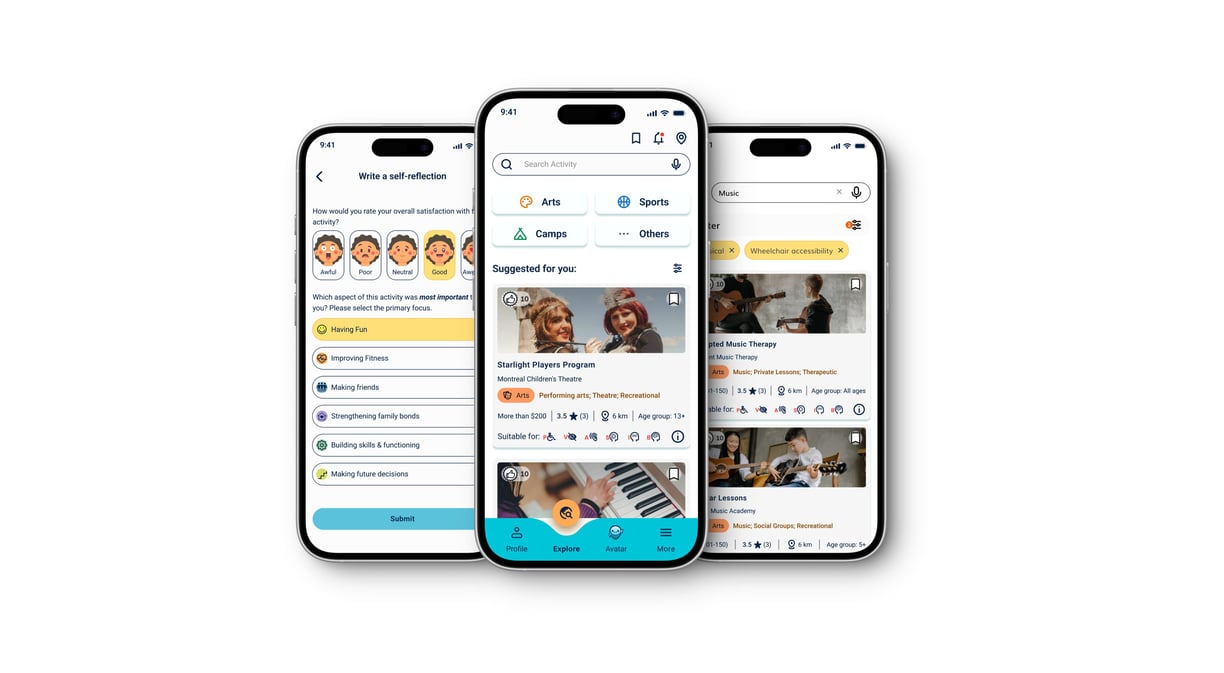

ABOUT THE PROJECT
When did I join the Jooay team?
Upon joining the research team at McGill University, I found that they had already completed a literature review and hypothesized that gamification could enhance retention. They conducted interviews with six youths with disabilities to gather their perspectives on the current app and gamification features.
What is the app about?
Jooay is an app designed for youth with disabilities, making it easier for them and their parents to discover nearby activities and programs within their community.
Problem
While the app sees a strong rate of new user installations, its retention rate is low
Outcome
Research findings uncovered key usability challenges and user needs, informing design decisions that improved navigation, interface design, and accessibility, with a focus on meaningful enhancements rather than merely adding new features.
OVEVIEW
CLIENT
Jooay
Research Institute of McGill University Health Centre
INFO
Role
Lead UX researcher
Team
1 product manager, 2 UX designers, 2 accessibility experts, 1 developer, 1 UX researcher & me
Tools
Optimal Workshop, Usertesting.com
Research process
Research Process
Findings
Finding
The main barrier to retention was not the lack of gamification but rather:
Difficult navigation
Lack of advanced search and filtering options –
Overwhelming interface (e.g. no clear categorization of activities)
Lack of accessibility standards

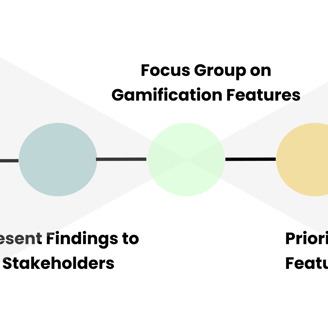
How did I turn user insights into gamified design"?
I began my research by developing an affinity diagram to evaluate the McGill interview findings, focusing on user insights regarding the integration of gamification features into the app.
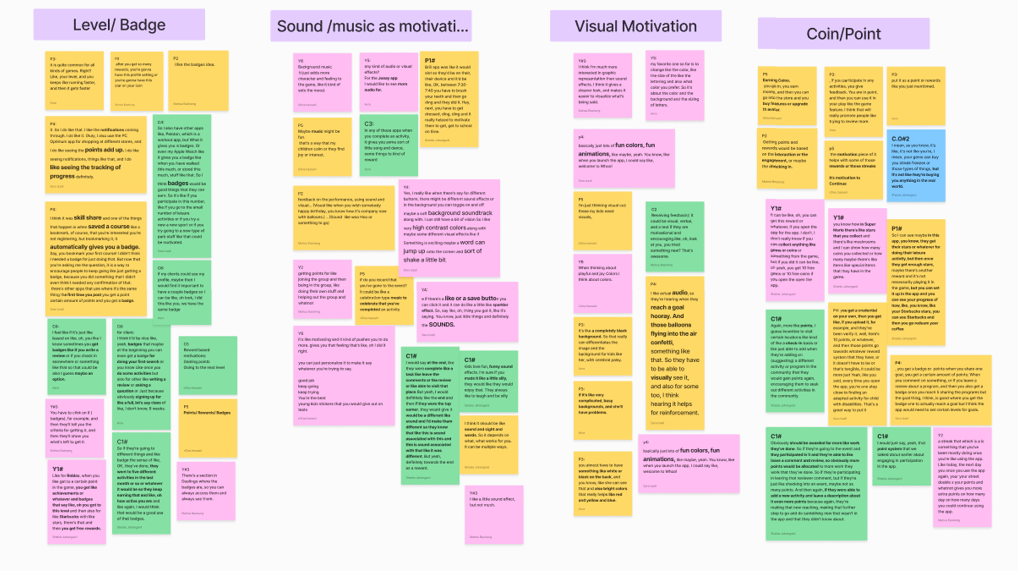



What were the primary issues with the app?
I began my research by analyzing the findings from the McGill interview about users' insights on adding gamification features in the app, and organizing them using an affinity diagram, I performed a heuristic evaluation to pinpoint usability issues within the app.
HEURISTIC EVALUATION
Key findings:
Some primary issues I discovered included the lack of an efficient filtering and search option, inadequate visualization, and inappropriate font size.
ANALYZING MARKET
Understanding the opportunities
After finding issues in the existing app, I conducted a competitive analysis to understand how other similar apps address these problems and uncover potential opportunities for improvement in our design.








Despite research showing navigation issues as the core problem, the founder insisted on adding gamification as the primary solution.
How did I Address Pushback from Stakeholders?
to make a balance between the business needs and users' needs, I proposed gamified features that guided users through the app while improving usability, Instead of simply adding unrelated gamification elements.
Following are the recommendation i provided to the design team :
SOLUTIONS
2)Activity Streaks.
To encourage repeat engagement, I recommended introducing streak-based challenges where users earn rewards for consistently attending activities and sharing reflections on their experiences.
1)Gamification that Enhances Navigation
Achievement-Based Exploration: I suggested to add a reward system for discovering new activities, encouraging users to navigate through different categories.
Interactive Hints & Tutorials: To improve navigation, I suggested integrating an interactive guide character that provides hints and step-by-step tutorials.
4) Themed Activity Placement
Given the founder’s request for an avatar feature, I suggested a reward-based system where users can place their customized avatar in a themed environment related to their favorite activity, such as a basketball court or an art class.
3)weekly quest rewards:
To further drive engagement, I proposed weekly quest rewards for completing specific actions, including:
Inviting friends to join activities.
Changing the avatar’s outfits to personalize their experience.
Adding a new activity to the app’s list, fostering community-driven content
Understanding users' needs-Interview analysis and focus group
After identifying the app’s issues, I utilized affinity diagram approach to analyze the transcriptions provided by the McGill research team, uncovering users’ needs, pain points, and expectations.
USER RESEARCH FINDINGS


Challenge
I identified biases in some interview questions that influenced users to express a need for gamification features, like goal setting. To address this, I proposed redoing the interviews, but it was declined due to time constraints. Instead, after developing low-fidelity prototypes, I recommended conducting focus groups to gain deeper insights into users' perspectives on the features identified during the initial interview analysis.






Parents
Youth
How did I translate key insights into actionable feature suggestion?
To move forward strategically, I met with stakeholders to discuss feature prioritization from the user’s perspective, assess technical feasibility, and ensure alignment with overall business goals.
Any challenges?
We were working under tight budget constraints and a fast-approaching deadline. This made it critical to champion user needs while clearly demonstrating the value of our design solutions. To guide our discussion, I created a table outlining:
What: A description of each proposed feature
Why: Its importance and relevance to user needs
How: A brief explanation of how the feature would function
Priority: Based on its potential impact on the user experience
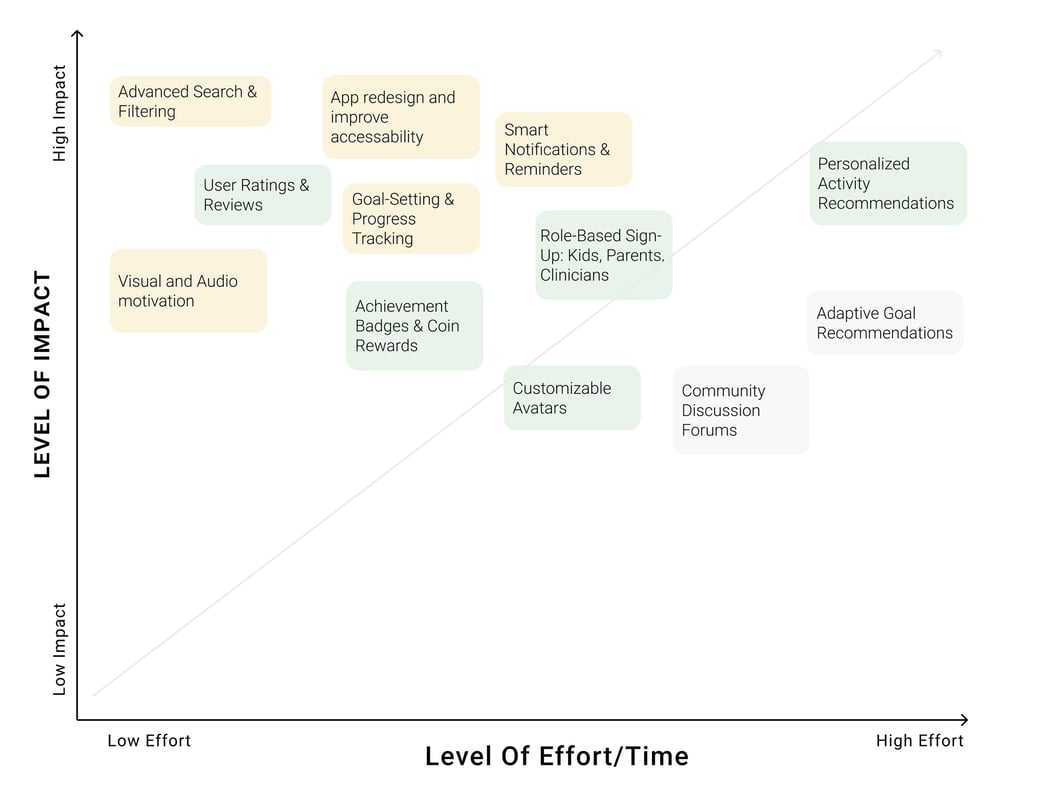

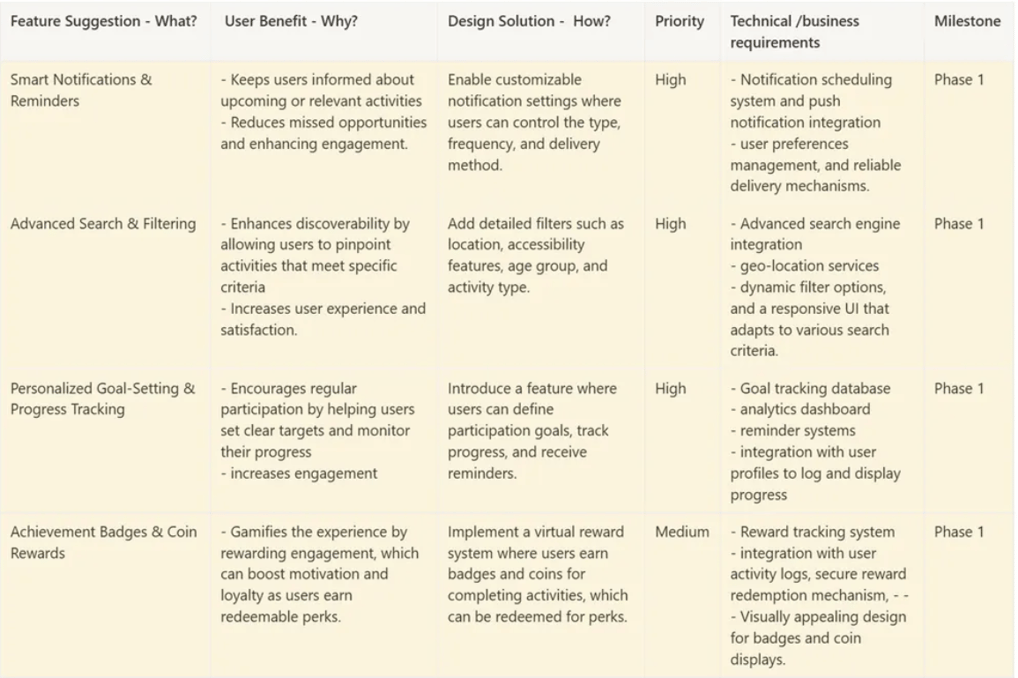

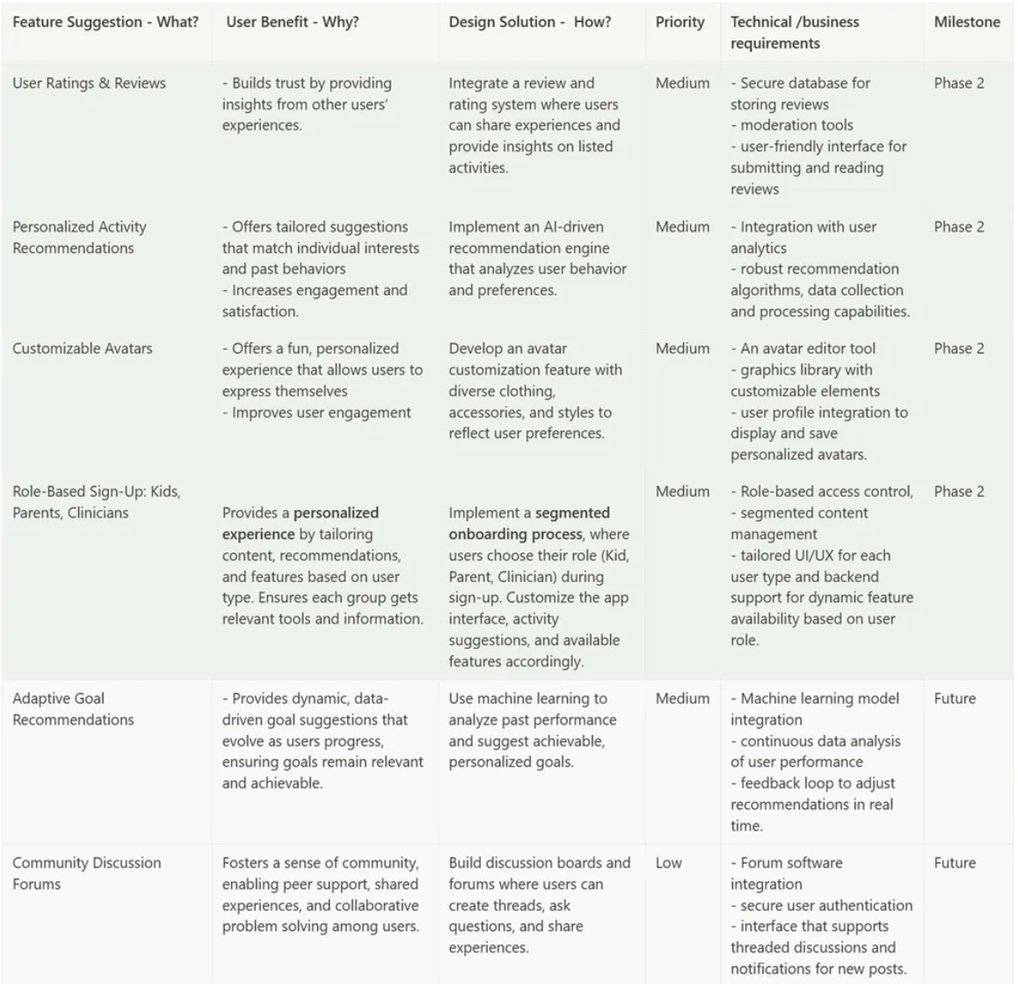

PERSONA
How did I present my findings to the team?
I created a persona and a journey map to visualize the user's goals, behaviors, and pain points, and to identify opportunities for improving the overall user experience.


Persona: Understanding our design audience
After identifying users’ needs and understanding the market landscape, I created personas for both parents and youth to deeply understand and empathize with our users and to ensure the design addresses the specific needs of each user group.


Why did I create a journey map for parents?
JOURNEY MAP
Due to the challenges in designing the parents' account process, I decided to create a journey map to better understand their needs and frustrations, ensuring that my design decisions would directly address and improve their experience.
USABILITY TEST
How do our users think?
Using UserTesting.com, I conducted usability tests where participants completed predefined tasks while I tracked key metrics such as task completion rate, error rate, time on task, drop-off rate, and time-based efficiency. I also analyzed user engagement through video recordings and verbal feedback to evaluate how effectively and intuitively users interacted with the product.
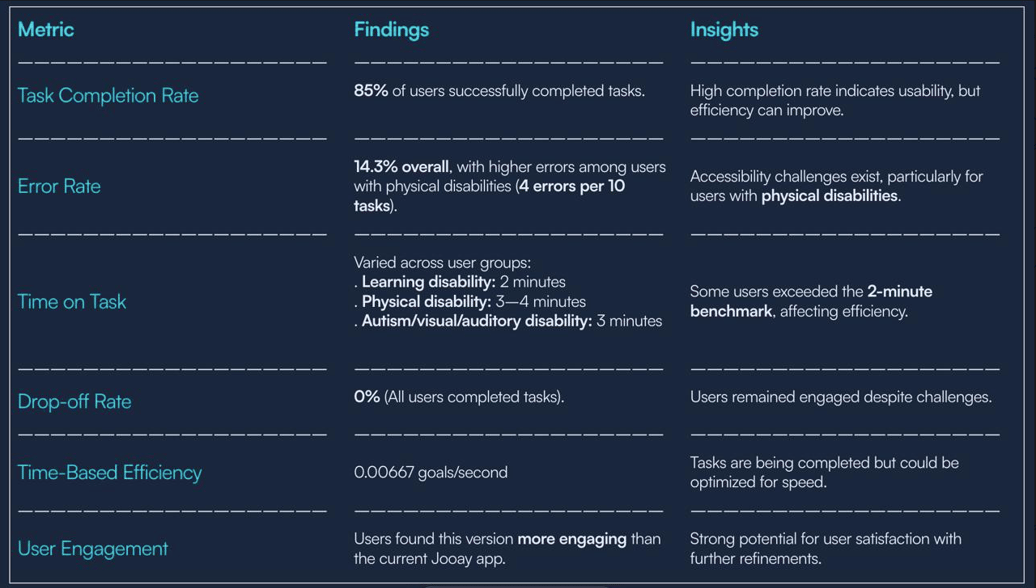

How do our users think?
Here are examples of the comments and insights I provided based on usability test sessions.
OUTCOME & NEXT STEPS
What was the outcome of my work?
A SUS score of 85 was achieved, indicating excellent usability.
